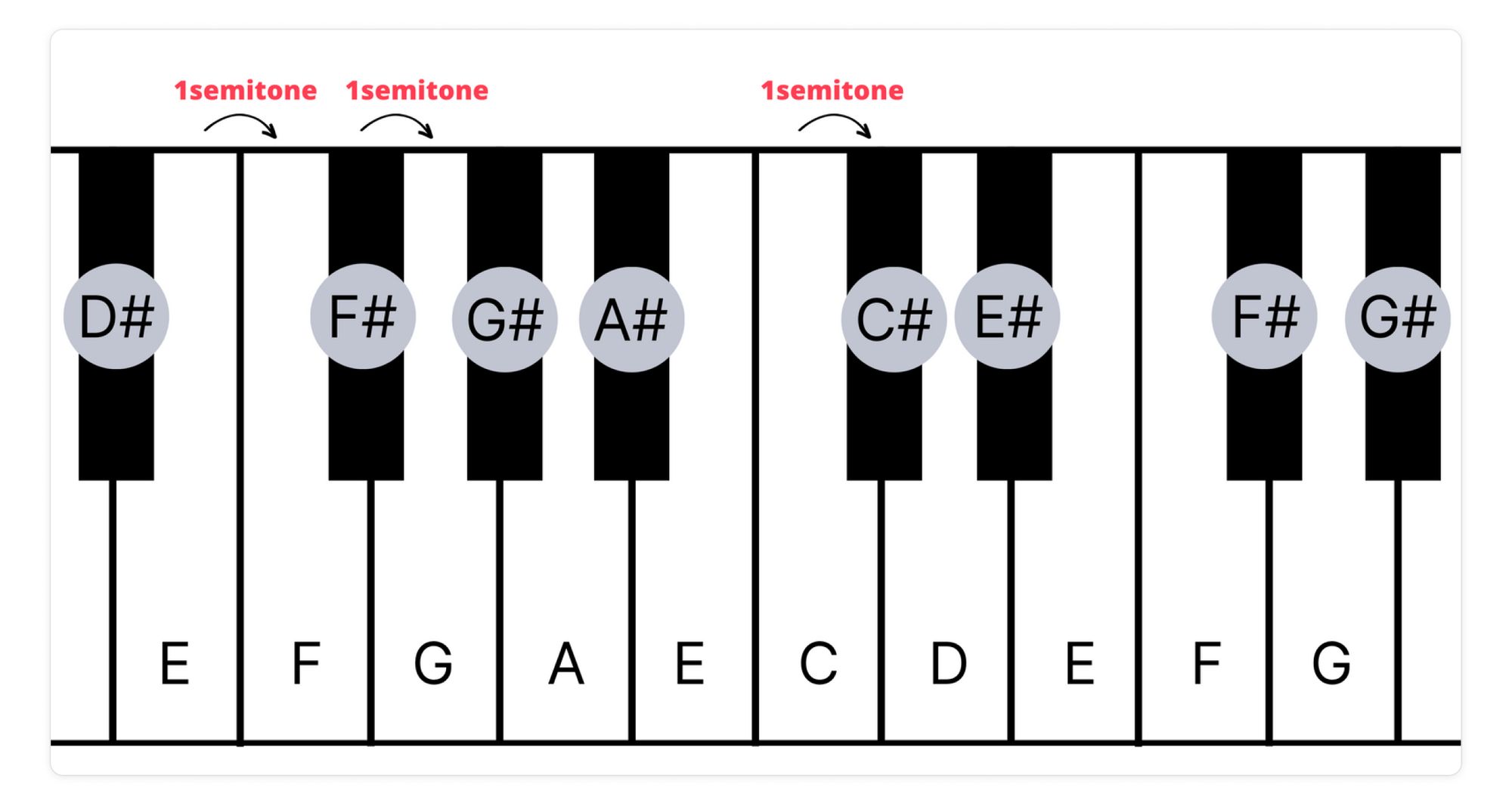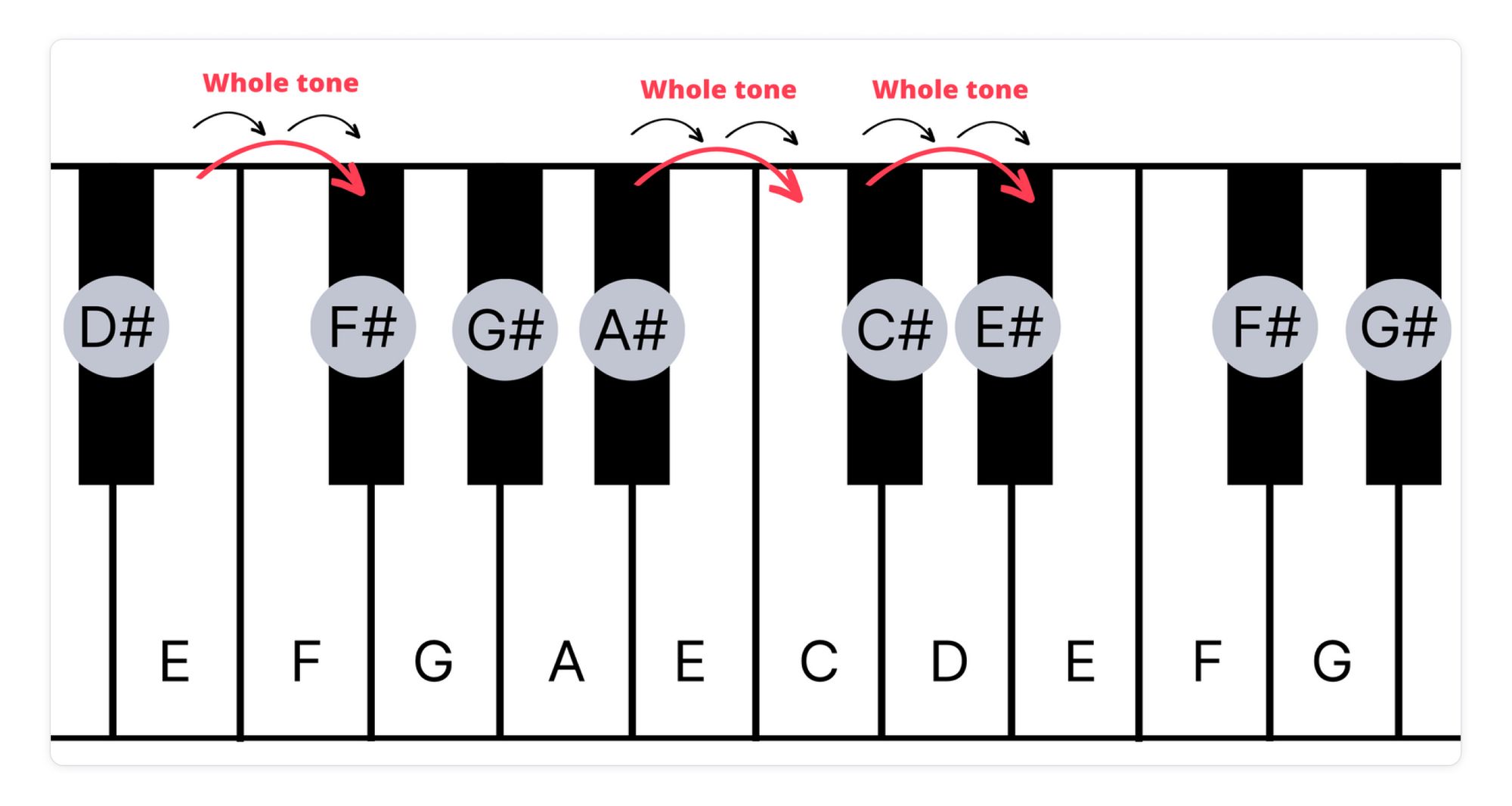In music, the distance between notes is called an "interval." We've already published a full article on what intervals are and how they work; here we'll focus on just the distances between the notes, which forms the foundation for crafting melodies, harmonies, chord progressions, and expressive musical elements. Understanding these note distances empowers composers to create captivating and emotionally resonant music compositions.
Ready to master the distance between notes to weave some beautiful music? Let's go!
In this article we will be focusing on two main concepts:
- semitone
- whole tone
💡 Make sure to check out our previous article "How Do Music Notes Work" if you are unfamiliar with music notes or want to refresh your memory.
Understanding semitones and whole tones becomes more accessible when using a keyboard, which is a valuable tool for practicing and internalizing the concepts learned today. That's why I always recommend picking up your keyboard to explore the distances between the notes.
(Don't worry if you don't have a physical keyboard; you can use the integrated keyboard in Flat's music notation software > tutorial.)
By actively engaging with the keyboard, you'll enhance your grasp of these fundamental musical elements and elevate your understanding of music theory.
What is a semitone?
Before answering this question, let's take a look at a keyboard:

On a keyboard, each key represents a specific note; when you press a key, you hear the sound of that designated note. The notes on the keyboard are organized in the familiar ascending order we know in music: C, D, E, F, G, A, B.

This arrangement makes it easier to visualize the space between notes on this instrument. A semitone on the piano is the distance between any two neighboring keys, regardless of whether they are black or white. It's the smallest step you can take on the musical scale (in western music, at least).

A semitone in music is the smallest gap between two notes. It represents the distance of one half-step between one note and another. For example, if you start on the note C and move up one semitone, you will land on the note C# (C sharp) or Db (D flat), depending on how it is named in the specific context.
Some more examples of semitones:
- F♯ and G
- E and F
- G and G#
- B and C
Confirm this information on the keyboard above or using your keyboard in Flat :).
What is a whole tone?
In short, a whole tone is equivalent to two semitones: two steps between one note and another.

Here are some examples of whole tones:
- E and F#
- A and C
- C# and E#
- G - A
Confirm this information on the keyboard above or using your keyboard in Flat :).
Pro tip
I recommend using your physical or virtual piano to play half-steps (semitones) and whole steps (whole tones, also known as tones) and start training your ear to recognize these types of distances between the notes. There's no magic or tricks here: only active practice will help you understand these concepts visually, logically, and audibly. The more you practice, the better you'll grasp it, trust me.
That's all for now, as this is already a lot of information to process and practice – we'll go a bit further in the next article!
